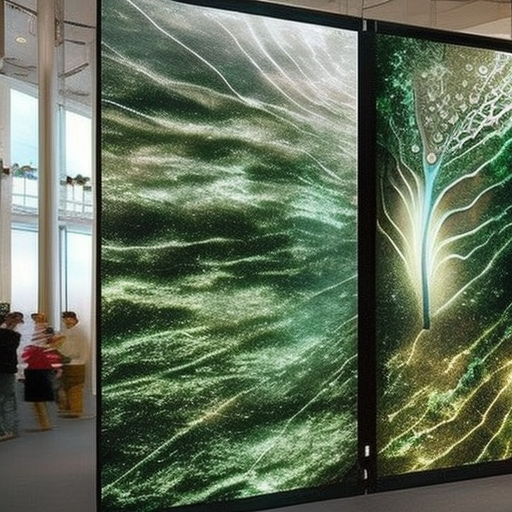Summary: Installations are a form of contemporary art that involves creating immersive and interactive experiences for viewers. They often incorporate various mediums and materials to transform a space and engage the audience on multiple sensory levels. Installations can be found in galleries, museums, public spaces, and even outdoors, providing a unique and dynamic way to experience art.
What are Installations?
Installations are a type of contemporary art that goes beyond traditional two-dimensional works like paintings or sculptures. They are three-dimensional, immersive experiences that are created to transform a space and engage the viewer on multiple sensory levels. Installations can incorporate various mediums and materials, including sculpture, video, sound, light, and even performance.
Characteristics of Installations
Installations are characterized by their site-specific nature, meaning they are created to be experienced in a specific location. They often take into account the architectural features, lighting, and overall atmosphere of the space. Installations can be temporary or permanent, depending on the intention of the artist and the context in which they are presented.
Types of Installations
There are various types of installations, each with its own unique approach and purpose. Some installations are interactive, allowing viewers to actively participate and engage with the artwork. Others are more contemplative, encouraging viewers to reflect and contemplate the meaning behind the piece. Installations can also be political or social in nature, addressing specific issues or themes.
Installation Artists
Many contemporary artists have embraced installations as a way to push the boundaries of traditional art forms. Some notable installation artists include Yayoi Kusama, who is known for her immersive and psychedelic environments, and Olafur Eliasson, who creates installations that explore light, color, and perception. Other artists, such as Christo and Jeanne-Claude, create large-scale outdoor installations that interact with the natural environment.
Experiencing Installations
Experiencing an installation is a unique and dynamic process. Viewers are encouraged to move around, explore, and interact with the artwork. The immersive nature of installations often creates a sense of wonder and awe, as viewers become fully immersed in the artist’s vision. Installations can evoke a wide range of emotions and sensations, from joy and excitement to contemplation and introspection.
Installations in Public Spaces
Installations are not limited to galleries and museums. They can also be found in public spaces, such as parks, plazas, and city streets. Public installations aim to engage a broader audience and create a sense of community. They often address social or environmental issues and can serve as a catalyst for dialogue and reflection.
The Impact of Installations
Installations have had a significant impact on the art world, challenging traditional notions of what art can be. They have expanded the possibilities of artistic expression and have encouraged viewers to actively engage with art. Installations have also influenced other disciplines, such as architecture and design, as artists collaborate with professionals from different fields to create immersive and experiential spaces.
In conclusion, installations are a form of contemporary art that creates immersive and interactive experiences for viewers. They incorporate various mediums and materials to transform a space and engage the audience on multiple sensory levels. Installations can be found in galleries, museums, public spaces, and even outdoors, providing a unique and dynamic way to experience art. They have expanded the possibilities of artistic expression and have had a significant impact on the art world, challenging traditional notions of what art can be.












